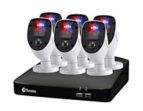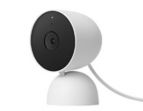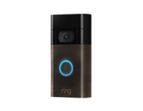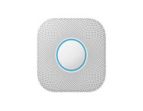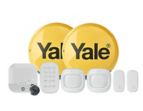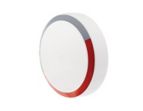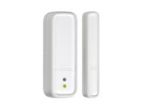SMART SECURITY GUIDE
SMART SECURITY GUIDE
Introduction
We all want to feel safe and secure in our homes and protect our property when we’re not there. And installing smart security is one way of achieving that. But what exactly is smart security, and how will it help?
This guide tells you everything you need to know about smart security before buying. What smart security is, the types of smart security systems available, how they work, their features and their costs. We also explain how they differ from traditional alarm systems and how to install them.

What is Smart Security?
Smart security is the collective name for home security devices that connect to the internet through Wi-Fi. They allow homeowners to protect and monitor their homes using an app on a smartphone or tablet. And the great thing about smart security is that people can check in on their homes from wherever they are. So, if there is a break-in or a fire, for example, the emergency services can be alerted straight away.
There are several types of smart security systems available, which we will cover in more detail in the next section. They each play their own part in securing the home, such as offering protection from intruders, surveillance, accessibility, and fire, smoke and carbon monoxide protection.
Types of Smart Security System
Different types of smart security products and accessories are available to make up a smart security system. Some can be used independently, and others need to be used together.
Smart Cameras and Smart Camera Systems
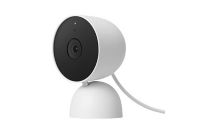
A smart camera system is a home surveillance kit that connects to the internet through Wi-Fi and monitors a home through cameras. Smart cameras are placed throughout the house, and images can be viewed via an app on a smartphone or tablet.
The system is often sold as a kit that consists of a hard drive that records and stores the footage, two or more smart cameras and the fixtures and cables needed to install it. Additional smart cameras can be purchased separately to cover a wider area of the home, or standalone smart cameras are also an option, if only one camera is required. There are also options for smart security cameras that store footage only on the cloud.
Smart Doorbells
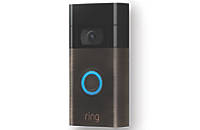
A smart doorbell is a doorbell with a built-in camera that uses Wi-Fi to connect to an app on a smartphone or tablet. The doorbell sends an alert when someone is at the door and provides a visual of who is there. They also often feature 2-way audio, so visitors can be communicated with whilst the homeowner is away from the property. And smart home video doorbells can also provide an extra level of security by detecting and capturing unusual activity.
Smart doorbells work independently of any other smart security system. There are wired and wireless versions available, and they are sold with all the fixtures and cables needed to install them.
Keyless Door Locks

Keyless digital door locks allow doors to be locked and unlocked without a key from anywhere. Depending on the model, they can be controlled by several methods: a PIN code keypad, key card, key tag, remote fob and a smartphone. The smartphone control is ideal for letting in friends, family or a tradesperson while no one is home.
Keyless door locks work as standalone items. But some can also be connected to a compatible smart home alarm system. They trigger the outside siren and send a notification to the smart device if someone tries to tamper with the lock.
Smart Fire, Smoke and Carbon Monoxide Alarms
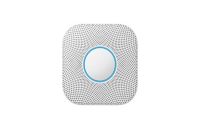
Smart fire, smoke and carbon monoxide alarms work just like the standard version of these alarms. Except, they also connect to an app on a smartphone or tablet via an internet connection and Wi-Fi. So, instead of just sounding an alarm if fire, smoke or carbon monoxide is detected, they also send a notification to a smart device. This is invaluable if the homeowner is away because it means the emergency services can be called immediately.
Some smart fire, smoke and carbon monoxide alarms work as standalone items. But some only work alongside a compatible smart home alarm system. They trigger the outside siren and send a notification to the smart device.
Smart Burglar Alarms and Accessories

A smart alarm system is a system that uses Wi-Fi to connect several intruder detecting components to a siren. Once set up, the system connects to an app on a smartphone or tablet. It can be turned on and off via the app and send notifications if the alarm is triggered.
Smart home alarm systems are sold as a kit. They typically consist of a smart hub, smart motion sensors, smart door sensors, smart window sensors, a keypad, an external siren and all the fixtures and cables needed to install it. There are also wireless smart alarm systems available that are easier to install. And you can purchase additional smart security alarm accessories to expand on the kit, such as extra motion and door/window sensors, key fobs and sirens.
Smart home alarms can be used independently but also work well with smart camera systems. So, if the alarm is triggered when the homeowner is away, they can check the camera footage to see what is happening.
Smart Sensors
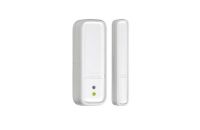
Smart sensors must be used as part of a smart burglar alarm system. There are two types of smart sensors available:
-
Smart PIR sensors:
These are smart motion sensors that are best placed at entry points of a home. The siren is triggered if motion is detected while the alarm is on.
-
Smart open/close sensors:
These sensors are made up of two parts to form a connection when a door or window is closed. The siren is triggered if they are opened while the alarm is on.
Smart sensors are connected to the smart alarm system via Wi-Fi. Then the whole system connects to a smartphone or tablet via an app to alert the homeowner if the alarm is triggered.
Smart sensors are sold separately, allowing you to purchase the correct amount needed to cover all windows, doors and entry points in a home. They are all battery operated and have a wireless connection for easy installation. But each brand will only be compatible with its own brand of smart alarm system, so always check compatibility before buying.
How Does a Smart Home Security System Work?
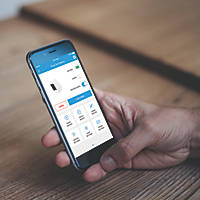
Smart home security works by connecting different smart home security devices to the internet through Wi-Fi. They allow the homeowner to monitor the security of their property remotely using a smart device.
Smart security components include smart camera systems, smart cameras, smart doorbells, keyless door locks, smart fire, smoke and CO alarms, smart burglar alarms and smart sensors.
Once smart security components are installed, download an app (each smart security manufacturer will have their own) and follow the instructions to connect the system.
Smart security systems can be simple or complex, depending on the level of security needed. As a minimum, a smart doorbell will allow the homeowner to monitor activity at their front door – the primary entry point to the home. But the system can be expanded to a full home security system that covers the whole property – with smart home cameras, motion sensors, door and window sensors and an alarm.
Smart Home Security Features to Consider
Smart home security devices come with many different features. But what’s available differs between brands and models. Check out the possible features below before buying to ensure you get a system that meets your needs:
-
Indoor and outdoor smart cameras:
Not all smart security cameras can be used outdoors. So, if you’re installing outside cameras, ensure they are weatherproof.
-
Wired and wireless smart camera and alarm systems:
All components in a wired system are connected to the mains power and to the security system’s hub with wires. Wireless systems connect components (i.e. cameras and motion sensors) to each other and to the hub via Wi-Fi. However, not all wireless systems are completely wire-free. Some components must be wired into the mains or connected to a plug socket for power. But there are battery-operated wireless components available, which are completely wire-free.
-
Outdoor sounders for smart security camera systems:
Some smart cameras come with an outdoor siren, so an alarm will sound if an intruder is detected in the home.
-
One-way or two-way audio smart cameras and doorbells:
Many smart home cameras and doorbells have built-in speakers and/or microphones. One-way audio cameras only have a microphone to allow the user to listen in on what’s going on. Two-way audio cameras have a speaker and microphone to enable the user to have a conversation with their visitor.
-
Cloud storage for smart cameras:
Video recordings take up a lot of storage space on a hard drive. So, smart camera systems that only rely on their hard drive for storage won’t save much data. Instead, some smart camera systems have cloud storage. This means files can be stored remotely and safely and can be downloaded and viewed from anywhere in the world through an internet connection. But there is often an additional charge for this service.
-
Multiple logins for smart security systems:
If more than one adult lives in a property, multiple logins for the home security system are essential. This will allow users to turn alarms and smart camera systems on and off as they come and go, independently of each other.
-
Motion detection for smart cameras:
Smart cameras can record continuously. However, some also have built-in motion detectors. This means that rather than recording an empty room, recording will only be triggered when motion is detected, and an alert will be sent to the connected smart device.
-
Night vision for smart cameras:
Night vision smart cameras use infrared technology to produce excellent quality video in low-light or no-light conditions. Most smart security cameras come with built-in night vision. But the distance they cover varies significantly. Some only cover a range of a few meters (which would be fine for an indoor camera), and some can cover 20m, 30m, 45m or more. These distances are ideal for outdoor cameras, but always check that the cameras you buy cover your needs.
-
Multi-zone set up for smart camera and alarm systems:
Some systems allow the user to set up zones that can be controlled independently. For example, set up separate zones for upstairs and downstairs, so only the downstairs zone is switched on overnight. Or set up a zone for pets that's free of movement detectors.
-
Geo technology for smart security cameras and alarm systems and locks:
Geo technology allows users to set up certain notifications that trigger when they are away from home. The technology works by tracking the location of the connected smart device via GPS. This can be used, for example, to alert the user that they forgot to turn on the smart camera or alarm system when they left home. Or that they failed to lock the door. Those things can then be done remotely from a smart device.
-
Disarming accessories for smart alarm systems:
Some smart alarm systems have extra accessories, such as a key fob or keypad, that can quickly disarm the alarm. This is useful if cleaners or dog walkers etc. need to enter the property while the homeowner is away.
-
Compatibility with other smart devices:
Some smart security systems can be connected to a smart speaker, such as Alexa or Google Home, so the system can be voice-controlled. Others can be connected to other smart home systems via a compatible smart hub. These systems can, for example, turn on lights when the occupants arrive home and open the front door. Or turn on a radio if motion is detected when the alarm is switched on. Connectivity does vary for each brand, so always check before you buy.
Smart security Costs to Consider
The cost of smart security will vary significantly depending on the type and size of the system and the features it comes with. When working out the cost, remember to factor in all the components you want to include, such as:
- A smart security camera system kit – a single kit will contain the hub and a set number of smart cameras
- Extra smart home cameras – if you want to cover a larger area than the smart camera kit allows for
- A smart doorbell
- A keyless door lock
- Smart fire, smoke and carbon monoxide detectors
- A smart burglar alarm kit – a single kit will contain the hub and a set number of motion, door and window sensors
- Extra smart motion sensors, smart door sensors and smart window sensors – if you want to cover a larger area than the smart burglar alarm kit allows for
- Paid for features – such as cloud storage, software updates or customer support.
Browse our smart security products, starting with smart camera systems to get a better idea of exact product costs to best meet your needs.
Difference Between Smart and Traditional Alarm Systems
Smart security systems have many benefits over traditional alarm systems, such as:
- Alerts are received via a smartphone when the user is away from home, giving real-time updates on activities and allowing them to respond immediately. A traditional alarm relies on neighbours or passersby to respond.
- There's no need to pay for professional monitoring as you can do with a traditional alarm system. Instead, smart security allows homeowners to monitor their homes themselves.
- They are more technologically advanced, with sophisticated features and the ability to sync with other smart devices.
- They can be controlled remotely through a smartphone. Unlike a traditional alarm system, if you forget to turn a smart alarm system on before leaving the house, it can be done remotely from a smartphone.
- They are easy to install as a DIY project. Traditional alarm systems usually require professional installation, which incurs extra costs.
How to Install Smart Home Security?
Installation of a smart home security system is usually a simple job that can be carried out by a competent DIYer. Particularly when installing a wireless system. However, a qualified electrician may be needed if any part of the system needs to be wired in.
Every smart security system will have its own set of installation instructions. But as a general guide, you'll need to first set up the smart hub, download the app onto a smartphone or tablet and follow the set-up instructions. All the system components can then be set up around the home: attach smart door and window sensors to doors and windows. Fix smart cameras, motion detectors, smoke alarms etc., into their appropriate positions. And then, each component can be linked to the app on the smartphone.

